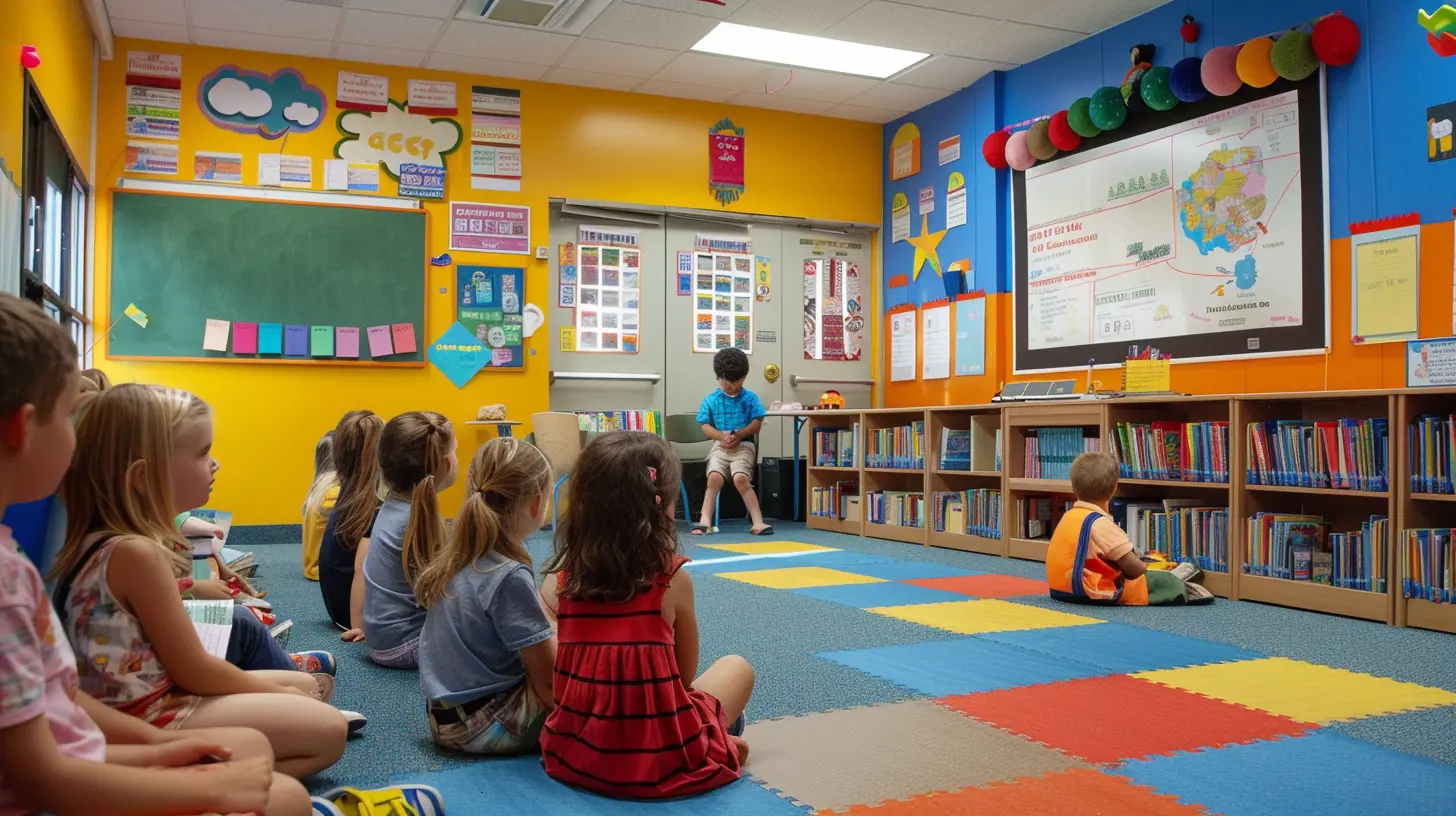Encouraging Active Participation Through Classroom Management
12 June 2025
Let’s admit it—keeping a classroom full of students engaged is a bit like herding cats in a room filled with laser pointers. One minute they’re following along, nodding like you’ve just read their minds, and the next—they’re mentally planning their after-school snack. (Spoiler alert: It’s cheese puffs... again.)
But hey, here’s the thing: active participation in class isn’t just a dream for teachers sipping their third coffee—it's entirely possible with strong, strategic classroom management. And no, we’re not talking about turning into a drill sergeant with a laminated behavior chart. We’re talking dynamic, student-centered, and dare I say... fun strategies that make students want to participate.
Grab your metaphorical whiteboard markers, because we’re diving into how you can make classroom management your not-so-secret weapon to kickstart student participation.
Why Bother With Active Participation Anyway?
Before we jump into the “how,” let’s chew on the “why.” What’s the point of encouraging active participation?Students aren’t just tiny knowledge sponges waiting to absorb facts. They’re more like popcorn kernels—apply the right conditions, and boom! They pop into bright, engaged thinkers. Active participation helps with:
- Improved understanding and retention of material
- Higher engagement and focus
- Better classroom dynamics
- Development of soft skills like communication and collaboration
- Positive behavioral outcomes (yes—fewer paper airplanes)
In short? Participation isn't just a box to tick—it's the heartbeat of an engaging, effective classroom.
The Secret Sauce: Classroom Management
Okay, so how do we get our students to go from “meh” to “let me answer that!”? The answer lies in the beautiful chaos we call classroom management.Think of it like setting the stage for a Broadway show. The best actor (your lesson plan) won’t shine unless the lights, sound, and backstage setup (aka, your management strategies) are on point.
Let’s break it down.
1. Set Expectations Early (and Repeat Them Often)
Imagine walking into a game with no idea of the rules. Total confusion, right? That’s what it’s like for students without clear expectations.Start by establishing classroom norms on Day 1, but don’t stop there. Revisit them regularly—post them on the wall, chant them like a team slogan, or weave them into class discussions.
✨ Pro tip: Frame expectations positively. Instead of “Don’t talk while others are talking,” say “Let’s respect each other’s voices.”
2. Create a Safe Space
No one wants to participate when they’re staring down the barrel of embarrassment. Classroom participation should feel less like jumping into shark-infested waters and more like hopping into a ball pit.Here’s how you build that comfy, risk-free zone:
- Celebrate mistakes as learning opportunities
- Encourage “think time” before calling on students
- Use strategies like “Turn and Talk” or “Think-Pair-Share” for lower-pressure responses
- Avoid sarcasm and judgmental comments—no one likes that
The safer students feel, the braver they become.
3. Use Seating to Your Advantage
Classroom seating? Oh yes—it’s more powerful than it gets credit for. It’s like the feng shui of education.Try flexible seating if possible—let students work in pairs, small groups, or cozy reading corners. If you’re stuck with traditional desks, play musical chairs with purpose: rearrange every few weeks to refresh the energy and interactions.
You’ll be surprised how a front-row seat can transform a quiet kid into a discussion dynamo.
4. Gamify Everything (Yes, Even Grammar)
Let’s face it: our brains are hardwired for games. That little dopamine hit after a win? Irresistible.So bring that magic into your classroom! Turn participation into a friendly competition with points, badges, or team games. Use tools like:
- Quizizz
- Kahoot
- Blooket
- Class Dojo
- Good ol’ fashioned whiteboard races
Bonus: Games promote collaboration and boost morale. Think of it as sneaky learning—like hiding veggies in spaghetti sauce.
5. Use Student Voice in Decision-Making
What happens when students feel ownership over their learning? They invest more.Let students choose topics for projects, decide on group roles, or help plan class activities. Even small choices, like picking the order of presentations, can have big engagement payoffs.
You don’t have to hand over the keys to the kingdom. Just crack the door open and let them peek inside.
6. Form Meaningful Relationships
Here’s a golden truth: students don’t engage in classrooms—they engage with people.Take time to know your students. Ask about their interests, remember who’s into skateboarding or anime, and share a little about yourself too (PG-rated stories only, of course).
When students feel seen, heard, and valued, they’ll want to participate not just for the grade, but for the connection.
7. Keep It Moving—Literally
We’re not designed to sit still for long periods—not adults, not kids, not even the classroom pet hamster.Incorporate movement into your lessons. Try:
- Gallery walks
- Station rotations
- Role-playing activities
- Brain breaks with GoNoodle or simple stretches
Getting those wiggly bodies moving pumps oxygen to the brain and re-energizes focus. Movement = magic.
8. Mix Up Questioning Techniques
“Any questions?” Crickets.Classic rookie mistake. The way you ask questions shapes the answers (or lack thereof) you get.
Instead of open-ended silence, try:
- Cold calling (nicely and fairly!)
- Using random name generators
- Posing “Would you rather…” academic dilemmas
- Phrasing questions like mysteries to solve
Keep curiosity alive and your students will be raising hands like they’re hailing a cab in 1980s Manhattan.
9. Offer Regular Feedback and Reinforcement
Participation should feel good—like the academic version of a high-five.Give shout-outs, stickers, positive notes home, or praise like, “I love how you connected that to yesterday’s discussion!”
And hey, while you’re at it, give feedback to improve, too. Things like, “That’s a good start. Can you add a reason to back that up?” show that their voices matter and have room to grow.
10. Keep It Real
This might be the most important tip of all: be yourself.If you’re trying to teach like your favorite TikTok education influencer or force excitement for something you secretly dread... students will sniff it out faster than a lunchroom mystery meat.
Show your quirks, share your passion, and be authentic. Your energy sets the tone. If you're genuinely excited to teach, students are far more likely to jump on the bandwagon.
Real Talk: It’s Not Always Perfect
Let’s be honest—some days, enthusiasm might be MIA. You’ll try every trick in the book, and still, it seems like your class has been taken over by zombies.That’s normal. That’s teaching. No strategy is perfect every day, with every student.
What matters is persistence. Keep showing up. Keep trying new things. Keep believing that your classroom can be a place of curiosity, laughter, and learning.
Because it can be.
And it starts with you.
A Quick Recap (Because Lists Are Our Love Language)
Here’s a lightning-fast rundown to keep in your back pocket:1. Establish and repeat clear expectations
2. Build a safe, supportive environment
3. Use strategic seating to foster collaboration
4. Gamify learning to spark engagement
5. Allow student voice in classroom decisions
6. Build authentic relationships
7. Integrate movement regularly
8. Vary your questioning techniques
9. Give meaningful feedback
10. Be your fabulous, authentic self
Final Thoughts: You’ve Got This
Encouraging active participation through classroom management may sound like a tall order, but it’s really about crafting a space where curiosity thrives.With a blend of clear expectations, engaging strategies, and genuine connection, your classroom can be less like a lecture hall and more like a buzzing beehive of eager learners.
So go ahead—try new approaches, play with structure, and let your classroom culture evolve. Participation isn't a happy accident. It's the result of intentional, thoughtful management choices.
And when your students pipe up with insights, debates, or even a totally unexpected joke that somehow connects to the lesson—it’ll all be worth it.
all images in this post were generated using AI tools
Category:
Classroom ManagementAuthor:

Eva Barker
Discussion
rate this article
2 comments
Otto McAdoo
This article highlights the importance of effective classroom management in fostering student engagement. It offers practical strategies that promote active participation, making learning a more interactive and enjoyable experience.
June 17, 2025 at 12:47 PM

Eva Barker
Thank you for your feedback! I'm glad you found the strategies effective in enhancing student engagement and making learning more interactive.
Nancy Wade
This article insightfully connects effective classroom management strategies to enhanced student engagement, highlighting how structured environments foster active participation and deeper learning experiences. A must-read for educators!
June 17, 2025 at 3:27 AM

Eva Barker
Thank you for your kind words! I'm glad you found the connection between classroom management and student engagement valuable.


